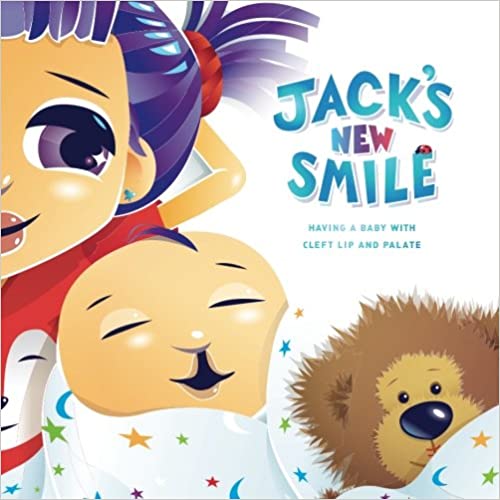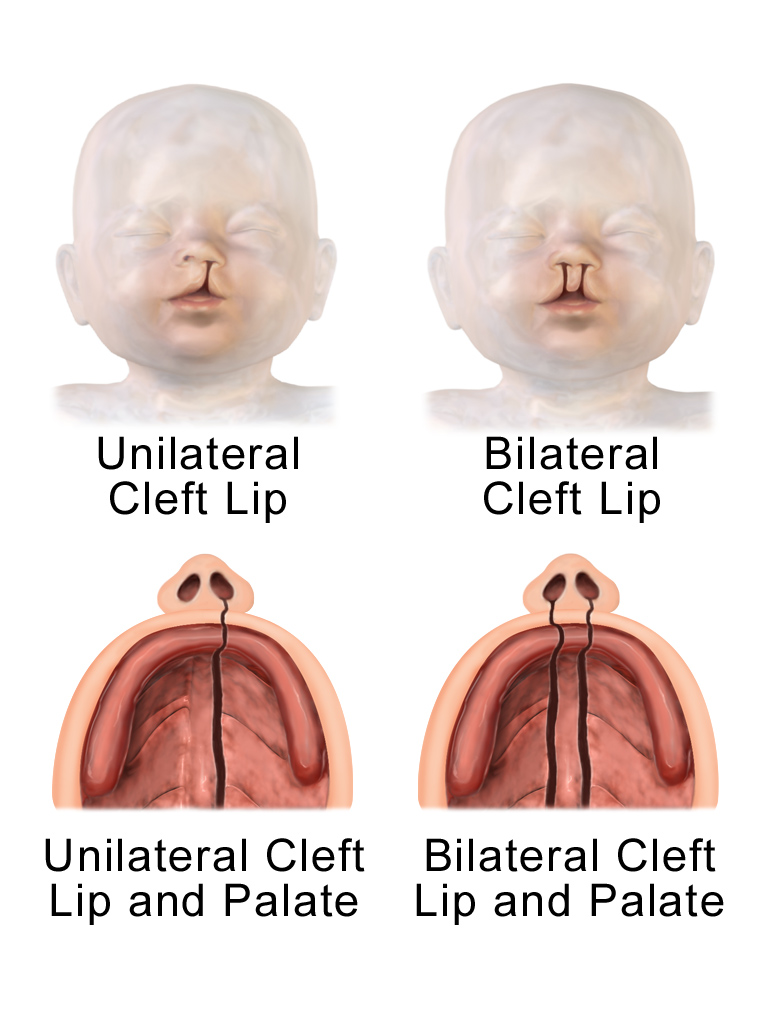There’s a new baby brother in town! But …why does his smile look different? ‘Jack’s New Smile‘ – coauthored by Ruth Trivelpiece, Suzanne West, and Jennifer Rhodes – is an excellent picture book that is written for brothers and sisters of a new baby with cleft lip and palate.

What is Cleft Lip and Palate?
Cleft lip/palate is one of the most common birth defects, affecting 1 in every 600 babies born in the US every year. During early pregnancy, the face parts do not come together and fuse like they are supposed to, leaving a cleft. A cleft is like a gap, a divide, or an opening. So cleft lip means that the lip is separated, and cleft palate means that there is a separation or gap in the roof of the mouth. Cleft lip and cleft palate can happen by themselves, or can be seen together. They can happen on one side of the mouth (unilateral) or on both sides of the mouth (bilateral).

‘Jack’s New Smile’ targets younger readers, ages 4-8yrs, but it is a great starting point to talk to children about what to expect when their sibling has cleft lip/palate. It is written in the voice of Jack’s sister, who welcomes him home from the hospital, and is naturally curious about the way his mouth looks.
It’s Complicated
There are a few issues that may come along with cleft lip/palate:
- Feeding – babies have a lot of difficulty with breastfeeding and very often need special bottles to be able to feed.
- Speech – the way the palate moves is important for making sounds. Sometimes even after a palate repair, speech can still be hard to understand
- Dental – if the cleft goes through the gums, teeth will not grow in properly.
- Hearing – With an abnormal palate, the ears will not drain into the mouth the way they should, which can cause hearing loss
Ultimately, children with cleft lip and palate may need multiple surgeries to correct these problems. Lip clefts are usually repaired before 3 months, and palate clefts are repaired closer to a year of age. They will also follow with many specialists, like speech therapists, nutritionist, surgeons, ear-nose-and-throat doctors, and dentists.
Don’t forget the sibling!
Siblings are sometimes left out of conversations surrounding the care of children with cleft palate. However, the frequent medical care and surgeries can be a source of worry and anxiety for them. In addition, they may feel neglected as parents naturally focus more of their time and attention on the child with a medical need.
- A recent study* that interviewed families of children with cleft lip/palate found that being involved and feeling included in the process was important for siblings. Parents also wanted more support explaining cleft lip/palate and its treatment to the child’s sibling.
‘Jack’s New Smile’ does a good job of answering some of the questions that siblings may have in a simple manner. The authors all work at the Craniofacial Care Center at Children’s Hospital of Richmond in Virginia. Jennifer Rhodes is a craniofacial and plastic surgeon for children; Ruth Trivelpiece is a speech and language pathologist and also the coordinator of the craniofacial program; and Suzanne West is a nurse practitioner. Their combined experience shines through this book clearly.
*Stock, Nicola Marie, et al. “The psychosocial impact of cleft lip and/or palate on unaffected siblings.” The Cleft Palate-Craniofacial Journal 53.6 (2016): 670-682.
Want to check out some other children’s books that feature characters with health conditions? Take a look at our bookshelf!

